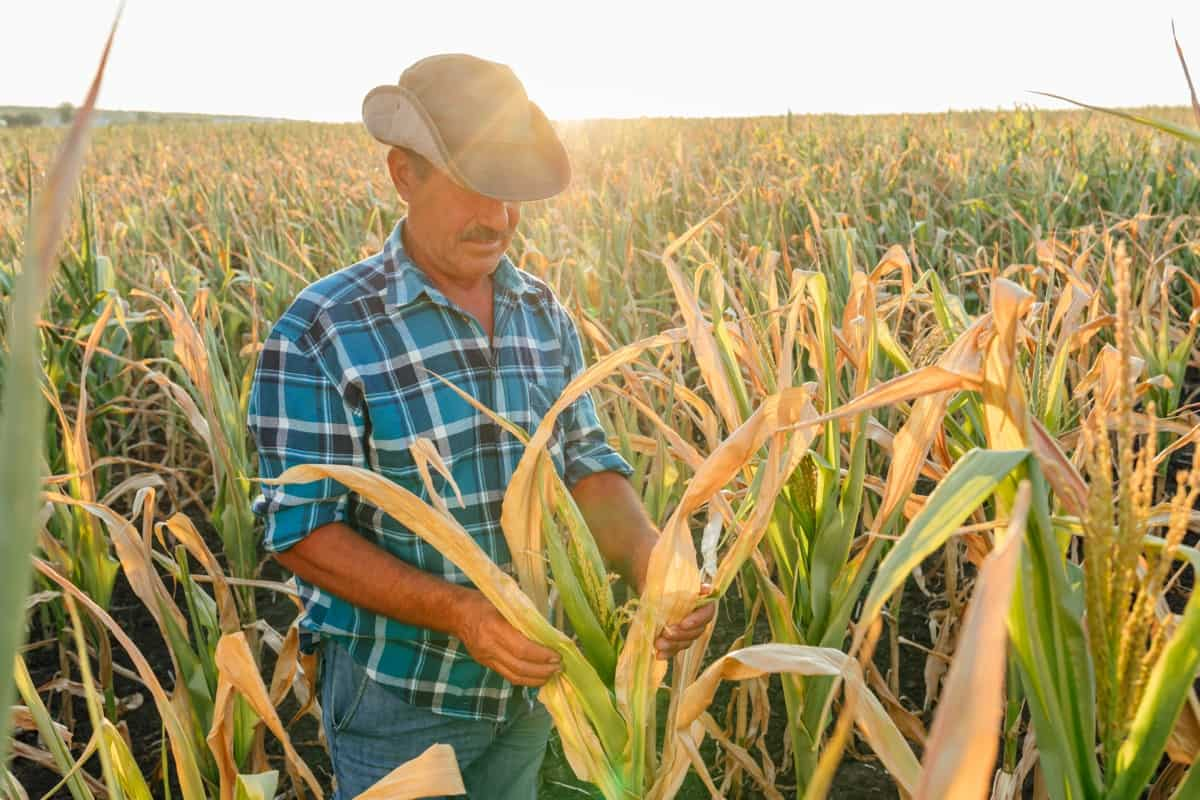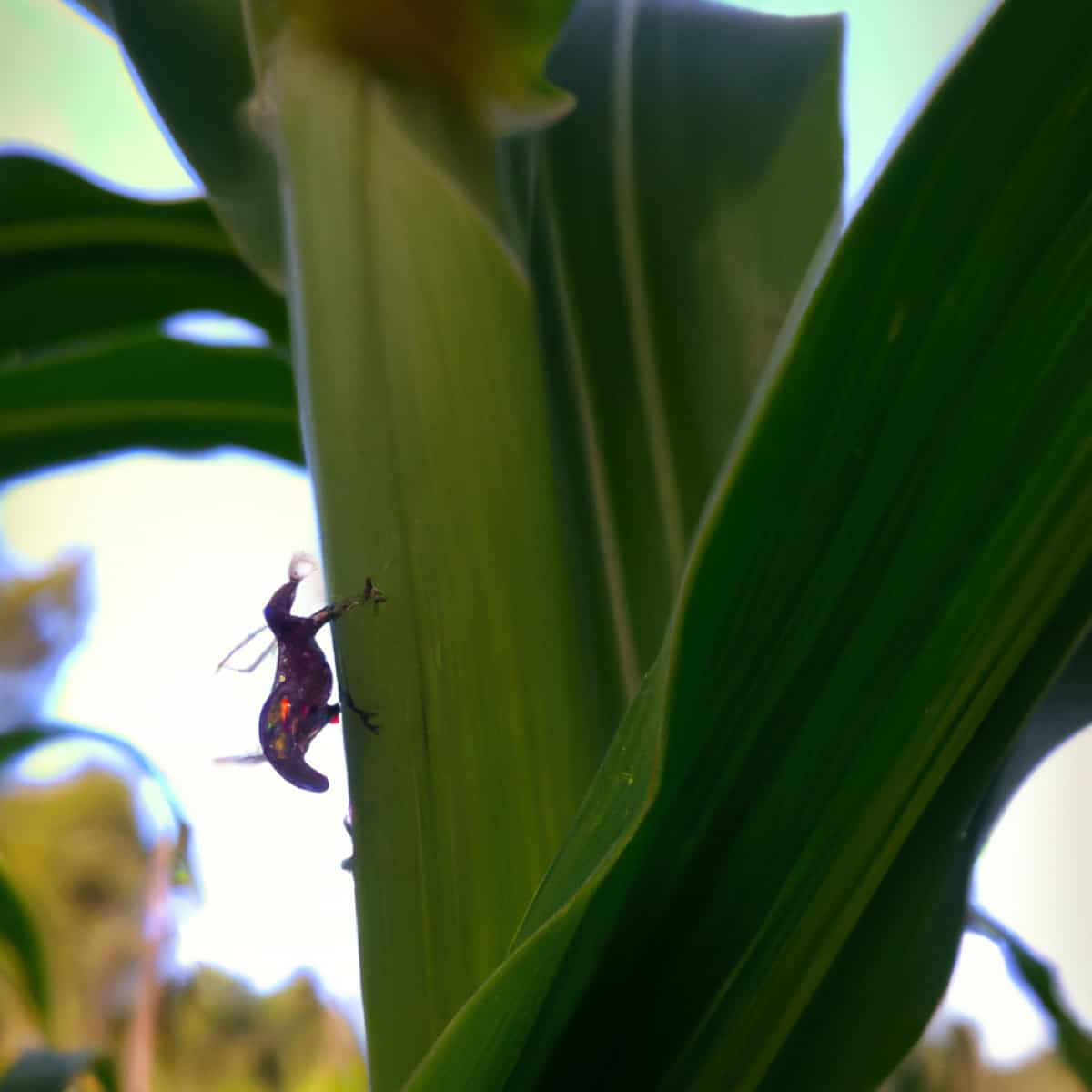The Maize Shoot Bug, Peregrinus maidis, belonging to the Family Delphacidae of the Order Hemiptera, is native to tropical and subtropical regions of the world. This bug feeds on the developing shoots of maize plants and can reduce the yield and quality of the crop. This pest is also known to harbor several other maize pests, including the maize weevil and the maize earworm.

The bug’s feeding activity destroys the plant’s developing shoots and can lead to stunted growth of the maize plant. Additionally, the bug is known to carry several pathogens, which can cause further damage to the maize crop. To effectively manage this pest, it is important to understand its life cycle, its preferred habitats, and the best methods for controlling it. This article will provide an overview and discussion of the Maize Shoot Bug Pest in Maize crops, including its symptoms, identification techniques, and control.
Maize Shoot Bug Pest Management
Life Cycle of Maize Shoot Bug Pest in Maize Crop
Egg: The female adult lays eggs on the newly developing maize shoots and stems. The larvae hatch out of the eggs after a few days and feed on the maize shoots and stems.
Nymph: The nymphs feed on the plant material, causing damage to the maize shoots and stems. As they grow, they molt several times and become larger. After reaching their final size, they develop wings and become adults.
Adult: They feed on the maize shoots and stems and lay eggs. They can cause extensive damage to the maize crops and be difficult to control.
Egg-laying Adult: The egg-laying adults lay their eggs on the maize shoots and stem, where they hatch, and the larvae start feeding on the plant material. This cycle continues until the adult dies or the larvae are killed. The maize shoot bug lifecycle usually takes 30 to 35 days to complete.
Occurrence of Maize Shoot Bug Pest in Maize Crop
- Location of maize shoot bug pest: This pest is found to infest maize crops in India, Mexico, the United States, and parts of Africa. In India, the pest infests the crops in the states, especially Karnataka, Tamil Nadu, Andhra Pradesh, and Madhya Pradesh
- Host range: The pest primarily infests maize crops, but it can also feed on other cereals such as wheat, sorghum, barley, rice, millets, and oats.
Factors Favoring the Population Increase of Maize Shoot Bug Pest in Maize Crop
- High nutrient content – The shoot bugs are attracted to maize crops due to their high nutrient content. Maize crops are high in carbohydrates, proteins, and other essential nutrients, providing an ideal environment for the pest to feed and reproduce.
- Poor management practices – Poor crop rotation, inadequate weed control, inadequate tillage, and inadequate pest control can create a favorable environment for the pest to thrive.
- Climate – A warm and humid climate with abundant moisture helps the pest survive and reproduce. This pest is more active in warmer temperatures of around 27-32°C.
- Crop residues – The maize shoot bug often finds shelter in crop residues, such as stalks and husks, left behind in the field after harvesting. This provides them with a secure place to survive and reproduce.
In case you missed it: Maize Aphids Pest Management: Symptoms, Treatment, Chemical, Biological, Natural, and Organic Control

Identification of Maize Shoot Bug Pest in Maize Crop
- Egg: The eggs are small, oval-shaped, yellow in color, and are laid inside the leaf tissues covered with a white waxy secretion.
- Nymph: The larvae or nymphs are wingless and have soft, yellowish-brown bodies.
- Adult: The maize shoot bug is a small bug 4-5 mm long, with translucent wings and yellowish-brown body color. It is easily identified by its distinct shape, with a small head, long antennae, and a broad body.
Damage Symptoms of Maize Shoot Bug Pest in Maize Crop
- The nymphs and adults suck the sap from the vascular bundles of the maize plants. These plants become ill, stunted, and turn yellow.
- The leaves dry and wither gradually from top to bottom.
- The panicle formation is hampered in severe infestation, and the plants die eventually.
- The bug produces a honeydew secretion resulting in the growth of sooty mould on leaves.
- The midrib of leaves gradually turns red due to egg-laying by the bugs.
Percentage of Yield Loss in Maize due to Maize Shoot Bug Pest
In the United States, maize shoot bug infestation can cause up to 50% yield loss in maize. In some southern states, the yield losses may be as high as 80%. In Africa, the yield losses due to the MSB pest can be even more severe. In Kenya, yield losses due to the MSB pest can reach up to 90%. In Tanzania, yield losses range from 40% to 70%.
In India, yield losses range between 5% and 25%. In China, the yield losses can be as high as 40%. In Mexico, yield losses can reach up to 50%. The Economic Threshold Level (ETL) for the maize shoot bug pest is set at 10-15 insects per 100 plants.
Cultural Control of Maize Shoot Bug Pest in Maize Crop
- Sanitation – This includes removing crop residues and weeds, which provide a favorable environment for the pest. It also includes removing infested plants to reduce the spread of the infestation.
- Good cultural practices – The proper selection and rotation of maize varieties, appropriate planting and management techniques, and removal of infested plants are good practices for controlling the pest.
- Traps – Traps can also reduce the population of maize aphids. The pheromone traps attract adult insects and capture them before they can lay eggs on the crop.
Biological Control of Maize Shoot Bug Pest in Maize Crop
- Natural predators such as Ladybird Beetles,, Syrphid flies, Spiders, Minute Pirate Bugs, and Big-eyed Bugs feed on the eggs and larvae of the maize shoot bug, reducing the population of this pest. Parasites, such as the Tachinid fly and Ichneumonid wasp, also feed on the pest.
- The fungus Beauveria bassiana is a pathogen that can be used to control the shoot bug populations.
Chemical Control of Maize Shoot Bug Pest in Maize Crop
- Mix 250 ml of Diazine 0.04% or Dimethoate 0.02% or Phosphomidon in 450-500 Liters of water and apply the mixture on the plants in one hectare as a foliar spray using a knapsack sprayer.
- Insect growth regulators, such as Tebufenozide, disrupt the insect’s growth cycle, preventing them from maturing into adulthood and reproducing. They can be applied as foliar sprays or soil drenches and provide long-term pest control but are ineffective against adult insects.
- Insecticidal baits, such as Spinosad, are attractive to pests and contain an insecticide that kills them when ingested. The baits are an effective way to control larger pest populations.
Preventive Measures for Control of Maize Shoot Bug Pest in Maize Crop
- Early planting gives the crop an advantage by reducing the time the shoot bugs have to reproduce. Early harvesting can also help reduce shoot bug populations by removing the maize before the pest can lay eggs.
- Planting non-host crops such as sunflower and soybean can help reduce the shoot bug’s survival and reproduction.
In case you missed it: Maize Web Worm Pest Management: Symptoms, Treatment, Chemical, Biological, Natural, and Organic Control

Conclusion
The maize shoot bug is a major pest of maize crops, causing significant losses in yield and quality. However, careful management of the pest through cultural control methods, such as crop rotation and intercropping, can help reduce the pest’s severity. In addition, chemical pesticides can help reduce infestations when necessary. With an integrated pest management strategy, farmers can help reduce the damage caused by this pest and protect their crops from significant losses.
- Deworming Schedule for Dogs/Puppies: A Beginners Guide
- How to Prevent and Control Parasites in Goats
- Beneficial Insects in Pest Management
- Natural Solutions for Pest Control in Flower Gardens
- Types of Fungicides Used in Agriculture
- Common Issues in the Fruit Development Stage of Pomegranate Farming
- Fruit Development Issues in Papaya: Easy Solutions and Treatment
- Soil-Borne Diseases and How to Protect Your Plants
- Practices to Prevent Disease Spread in the Garden